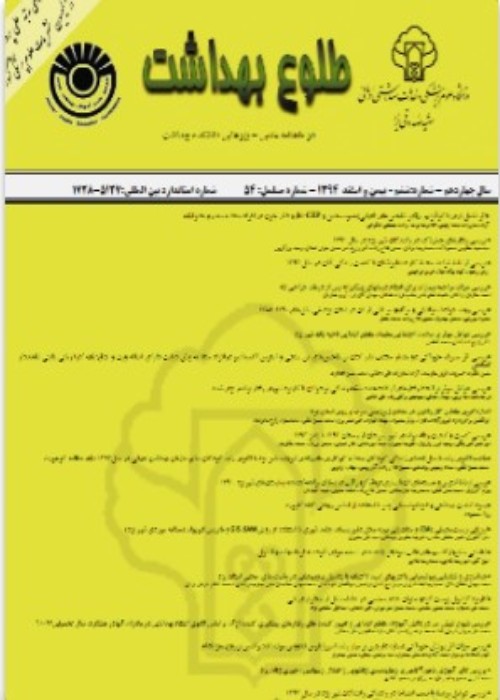Biosorption of lead and Zink ions from Synthetic Aqueous Solutions by Choneibeh powdered activated sludge
Author(s):
Abstract:
Introduction
Since the existing methods to remove the hazardous material are associated with problems, recently, the tendency is to use Biosorption methods by Low-cost adsorbents: this was investigated in our project. This study was conducted to investigate the adsorption of lead and zinc from aqueous solution by using powdered excess sludge (biosolid) from sludge drying beds of municipal wastewater. Methods
Experiments were carried out as batch system with the shaker device at 20 to 26ºC and a stirring rate of 200 rpm by preparing solutions in 100 ml of sludge powder. The experiments were carried out with synthetic effluent prepared by zinc and lead standard solutions. Parameters affecting the adsorption of this research was determined by solution pH at 2 to 6, contact time 5 to 300 minutes, initial metal ion concentration 50, 100 and 150mg/l as well as determining the equilibrium adsorption. The pretreatment of biosolids consisted of dewatering, grinding and grainsizing with sieves (mesh dimensions between 120 and 230).Results
According to the results of biosorption process, maximum lead adsorption efficiency in 150 mg/l concentration was 98.8% at 5 minutes contact time, and maximum zinc adsorption efficiency in 50mg/l concentration, 35.6% at 30 minutes. The equilibrium time for lead ion was observed after 120 minutes, and 300 minutes for zinc ion. Optimum pH was found 4 and 6 for lead and zinc ions respectively. Optimum concentration of biosolid was observed in 2g/l with maximum adsorption efficiency of 98.7% and 4g/l with maximum adsorption efficiency of 72.7% for lead and zinc ions respectively. Freundlich Isotherm was an appropriate method to describe the adsorption for both metals. Langmuir isotherm is highly appropriate for zinc linear regression, and the results out of lead adsorption were far-reaching.Conclusion
According to the results, excess municipal sludge can be used as an available and very excellent adsorbent for lead ions, and also an appropriate adsorbent to remove zinc from effluents with average concentration in biosolids with low initial concentration of zinc.Keywords:
Biosorption , Lead , Zink , Biosolid , Adsorption , Isotherms
Language:
Persian
Published:
Tolooe Behdasht, Volume:12 Issue: 4, 2014
Pages:
1 to 14
magiran.com/p1258954
دانلود و مطالعه متن این مقاله با یکی از روشهای زیر امکان پذیر است:
اشتراک شخصی
با عضویت و پرداخت آنلاین حق اشتراک یکساله به مبلغ 1,390,000ريال میتوانید 70 عنوان مطلب دانلود کنید!
اشتراک سازمانی
به کتابخانه دانشگاه یا محل کار خود پیشنهاد کنید تا اشتراک سازمانی این پایگاه را برای دسترسی نامحدود همه کاربران به متن مطالب تهیه نمایند!
توجه!
- حق عضویت دریافتی صرف حمایت از نشریات عضو و نگهداری، تکمیل و توسعه مگیران میشود.
- پرداخت حق اشتراک و دانلود مقالات اجازه بازنشر آن در سایر رسانههای چاپی و دیجیتال را به کاربر نمیدهد.
دسترسی سراسری کاربران دانشگاه پیام نور!
اعضای هیئت علمی و دانشجویان دانشگاه پیام نور در سراسر کشور، در صورت ثبت نام با ایمیل دانشگاهی، تا پایان فروردین ماه 1403 به مقالات سایت دسترسی خواهند داشت!
In order to view content subscription is required
Personal subscription
Subscribe magiran.com for 70 € euros via PayPal and download 70 articles during a year.
Organization subscription
Please contact us to subscribe your university or library for unlimited access!


